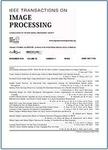版权所有:内蒙古大学图书馆 技术提供:维普资讯• 智图
内蒙古自治区呼和浩特市赛罕区大学西街235号 邮编: 010021

作者机构:Chinese Acad Sci Inst Automat Beijing 100190 Peoples R China
出 版 物:《IEEE TRANSACTIONS ON IMAGE PROCESSING》 (IEEE Trans Image Process)
年 卷 期:2017年第26卷第2期
页 面:724-737页
核心收录:
学科分类:0808[工学-电气工程] 08[工学] 0812[工学-计算机科学与技术(可授工学、理学学位)]
基 金:National Natural Science Foundation of China [61402480 61432008 61472423 61502495 61532006]
主 题:Moving object detection tensor nuclear norm tensor total variation space-time visual saliency
摘 要:In this paper, we propose a new low-rank and sparse representation model for moving object detection. The model preserves the natural space-time structure of video sequences by representing them as three-way tensors. Then, it operates the low-rank background and sparse foreground decomposition in the tensor framework. On the one hand, we use the tensor nuclear norm to exploit the spatio-temporal redundancy of background based on the circulant algebra. On the other, we use the new designed saliently fused-sparse regularizer (SFS) to adaptively constrain the foreground with spatio-temporal smoothness. To refine the existing foreground smooth regularizers, the SFS incorporates the local spatio-temporal geometric structure information into the tensor total variation by using the 3D locally adaptive regression kernel (3D-LARK). What is more, the SFS further uses the 3D-LARK to compute the space-time motion saliency of foreground, which is combined with the l(1) norm and improves the robustness of foreground extraction. Finally, we solve the proposed model with globally optimal guarantee. Extensive experiments on challenging well-known data sets demonstrate that our method significantly outperforms the state-of-the-art approaches and works effectively on a wide range of complex scenarios.